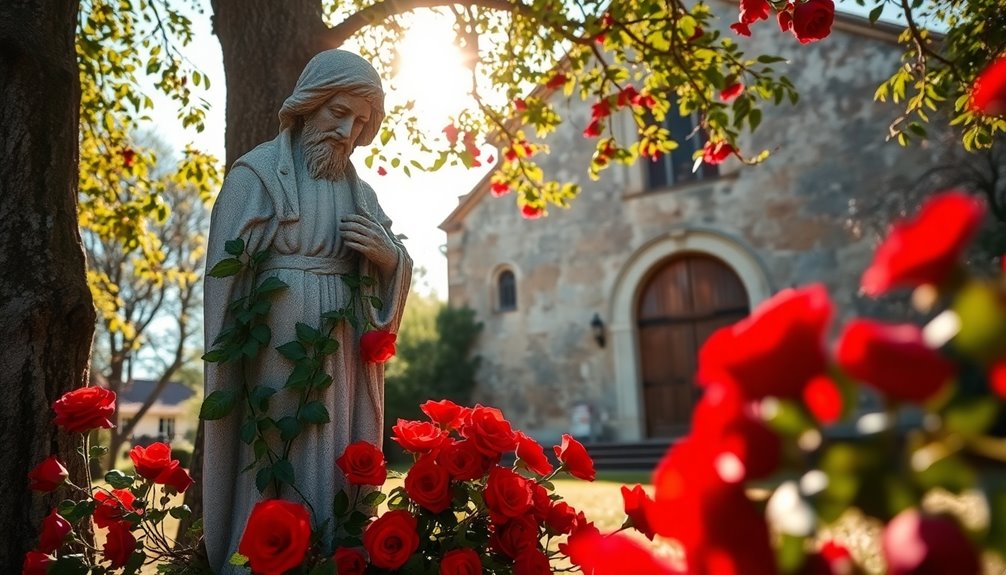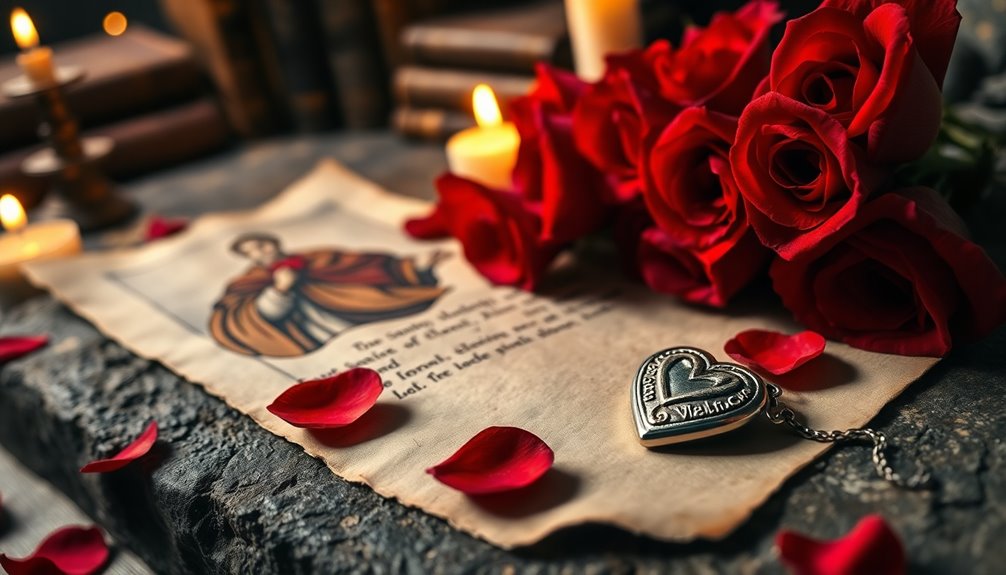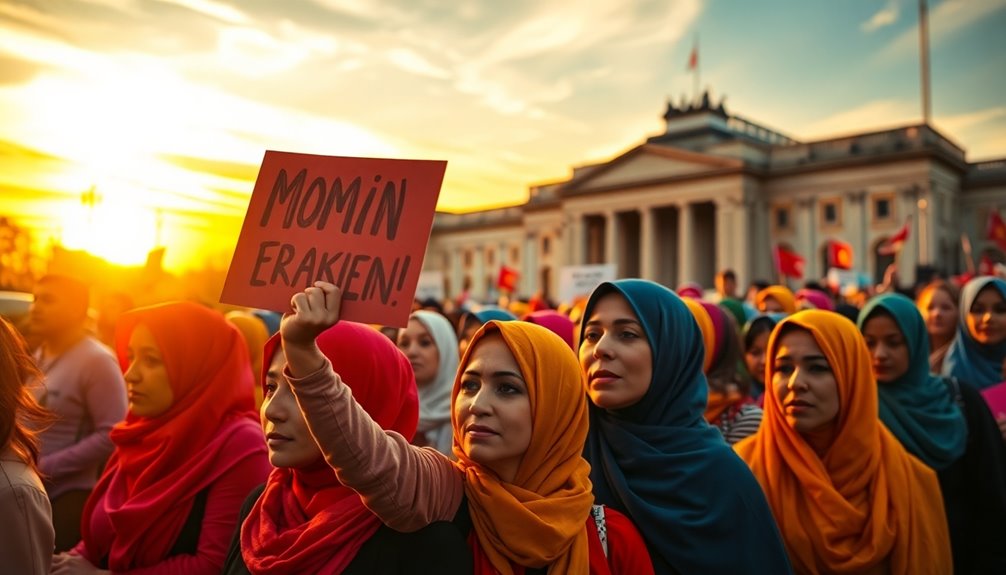Valentine's Day has its roots in ancient Rome with the festival of Lupercalia, which included fertility rituals. The Catholic Church later adopted February 14 to honor St. Valentine, a martyr known for secret marriages and love letters. Over time, the day transformed from a religious observance to a celebration of romantic and platonic love, heavily influenced by literature. If you explore further, you'll discover more fascinating details about how these traditions evolved.
Key Takeaways
- Valentine's Day originated from the Roman festival of Lupercalia, which included fertility rites and was later replaced by St. Valentine's Day.
- St. Valentine is remembered as a martyr who secretly married couples, promoting love during a time of persecution.
- The association of Valentine's Day with romantic love was popularized by Geoffrey Chaucer and later by Shakespeare's writings.
- Modern celebrations feature various customs, including gift exchanges, romantic dinners, and expressions of love on social media.
- The holiday has become commercialized, with retailers promoting cards, chocolates, and gifts, shifting focus from its historical and religious origins.

Origins of Valentine's Day
Although Valentine's Day is widely celebrated as a day of love and affection, its origins trace back to ancient traditions steeped in both pagan and Christian influences. You might be surprised to discover that this cherished holiday began with the Roman festival of Lupercalia, a mid-February event filled with fertility rituals and sacrifices. Lupercalia involved feasting and pairing off partners as part of its festivities, highlighting the holiday's deep-rooted connections to love and romance.
As Christianity spread, the Catholic Church sought to replace Lupercalia with St. Valentine's Day, honoring a martyr named Valentine to counteract the pagan celebrations. February 14 became a date of significance, linking the day to both religious and romantic themes.
You may wonder about the figure of St. Valentine. Interestingly, there were at least two martyrs named Valentine, both executed by Emperor Claudius II. Legends about St. Valentine often paint him as a romantic figure who performed secret marriages and penned love letters.
However, little historical evidence exists about his life, leaving room for myths to flourish. Despite this uncertainty, the Catholic Church recognized him as a saint, and he became a symbol of love, albeit not originally intended.
The influence of literature can't be overlooked when exploring how Valentine's Day evolved. Geoffrey Chaucer played a pivotal role by linking St. Valentine's Day with romantic love in his poetry, particularly in "The Parlement of Foules."
Shakespeare further popularized this association, shaping how you perceive the day. Over time, Valentine's Day transitioned from a Christian feast to a more commercialized celebration filled with cards, chocolates, and gifts.
Today, you're part of a global celebration that embraces diverse customs and expressions of love. The Industrial Revolution made Valentine's Day cards and gifts widely accessible, and symbols like Cupid, the Roman god of love, adorn decorations and cards you encounter.
Modern traditions include romantic dinners, gift exchanges, and social media expressions, reminding you that love—whether romantic or platonic—continues to thrive on this special day.
Frequently Asked Questions
What Are Some Popular Valentine's Day Traditions Worldwide?
Valentine's Day traditions vary worldwide.
In Germany, you might exchange gingerbread hearts with love messages, while in Japan, women give different types of chocolate based on their feelings.
Italians often share Baci Perugina chocolates filled with hazelnuts and love notes.
In the Philippines, you could participate in mass weddings, and in South Africa, you might pin your crush's name to your sleeve to reveal secret admirers.
Each tradition celebrates love uniquely!
How Did Valentine's Day Become Commercialized?
Valentine's Day became commercialized through innovative marketing and product offerings.
You see, Richard Cadbury introduced heart-shaped chocolate boxes in 1861, while Esther A. Howland mass-produced cards in the 1840s.
Companies like Hallmark expanded the market with seasonal cards starting in 1913.
As print and TV advertising grew, so did the variety of gifts, from chocolates to jewelry.
Today, digital platforms and targeted marketing strategies keep the holiday thriving and evolving.
What Are Common Gifts Exchanged on Valentine's Day?
Valentine's Day gifts are nothing short of legendary!
You'll often see roses and chocolates topping the list, followed closely by personalized items like cards and collages that show you care.
A romantic dinner, whether at home or a fancy restaurant, never goes out of style.
Jewelry remains a classic choice, while experiences like weekend getaways and handmade gifts are trending.
With so many options, you can surely find the perfect way to express your love!
Are There Any Valentine's Day Myths or Legends?
You might've heard myths surrounding Valentine's Day, like the tale of St. Valentine secretly marrying couples against Emperor Claudius II's orders.
Another legend claims he fell in love with his jailer's daughter and restored her sight through prayer.
There's also the idea that birds choose their mates on this day, a belief rooted in medieval England.
These stories add a layer of romance and intrigue to the celebration of love each February 14th.
How Do Different Cultures Celebrate Love on This Day?
You might think Valentine's Day is just about flowers and chocolates, but cultures around the world celebrate love in unique ways.
In Japan, women give chocolates to men, while South Koreans reciprocate on White Day.
In France, lovers exchange heartfelt letters, and in Finland, friends celebrate with cards.
Each culture adds its own twist, showcasing love's diverse expressions, from romantic gestures to friendships, creating a beautiful tapestry of connection on this special day.
Conclusion
As you wander through the garden of time, you'll find Saint Valentine's spirit woven into the petals of love. Each rose whispers tales of defiance and devotion, reminding you that love blooms even in adversity. So, as you celebrate this day, remember the seeds planted long ago, nurtured by courage and compassion. Let your heart dance like a butterfly among the blossoms, embracing the legacy of love that unites us all, now and forever.










